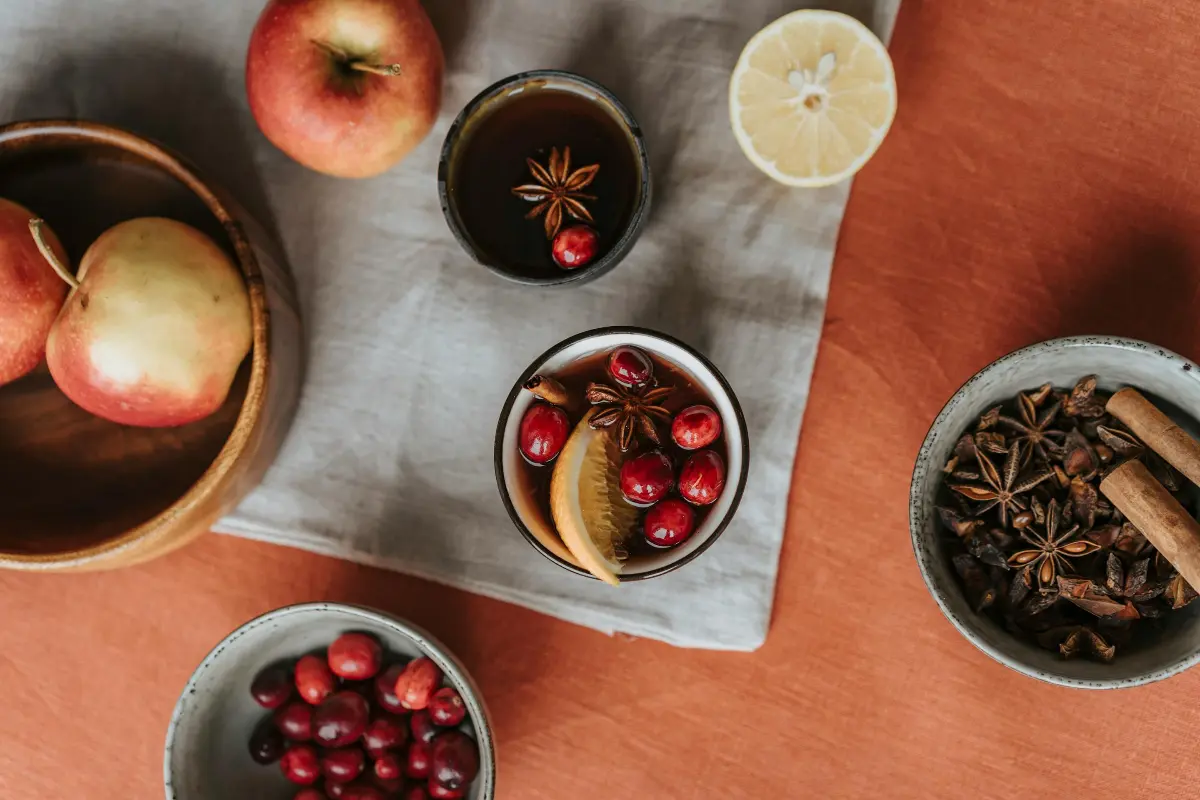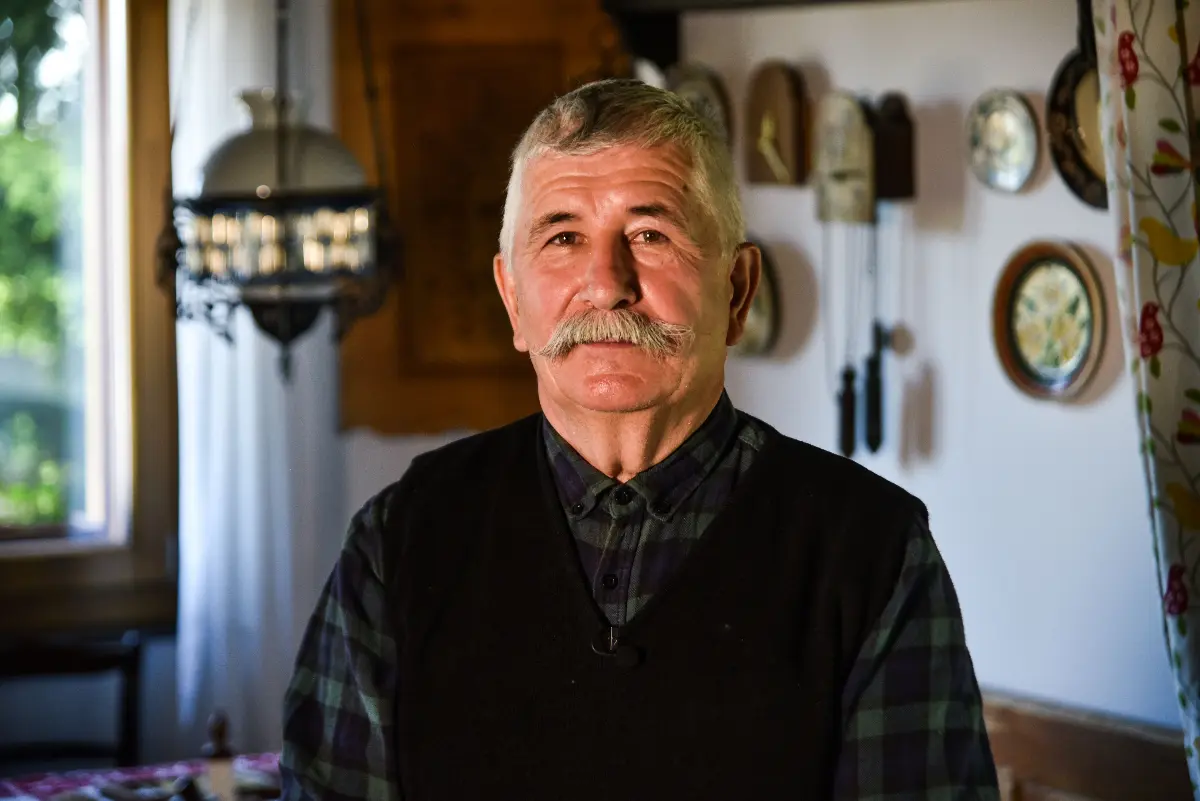
Helyszín címkék:
The past comes to life under the hands of Zoltán Gosztonyi, a pensioner from Kaposvár
Németh Krisztina
In Kaposvár, in every corner of the cellar of a family house, grey cattle horns, bones, antlers and wooden logs are lined up in order of size. And in one corner of the unique workshop, Zoltán Gosztonyi is meticulously at work. The 71-year-old pensioner is considered one of the most talented representatives of the Somogy woodcarving tradition. No wonder, he has been learning and practising the craft for decades, despite having worked as a computer programmer for 15 years as an electronics technician.
– I have been carving since I was three years old. It is true that, at that time only lighters for heating. My mother was a teacher at the Hunyady castle in Balatonszemes. I remember being asked by the headmaster at the time what I was doing with the knife, but my mother just smiled. So, as a village child, I knew from an early age what wood could be used to make what. Young people today learn this from books – he recalls of the early days.
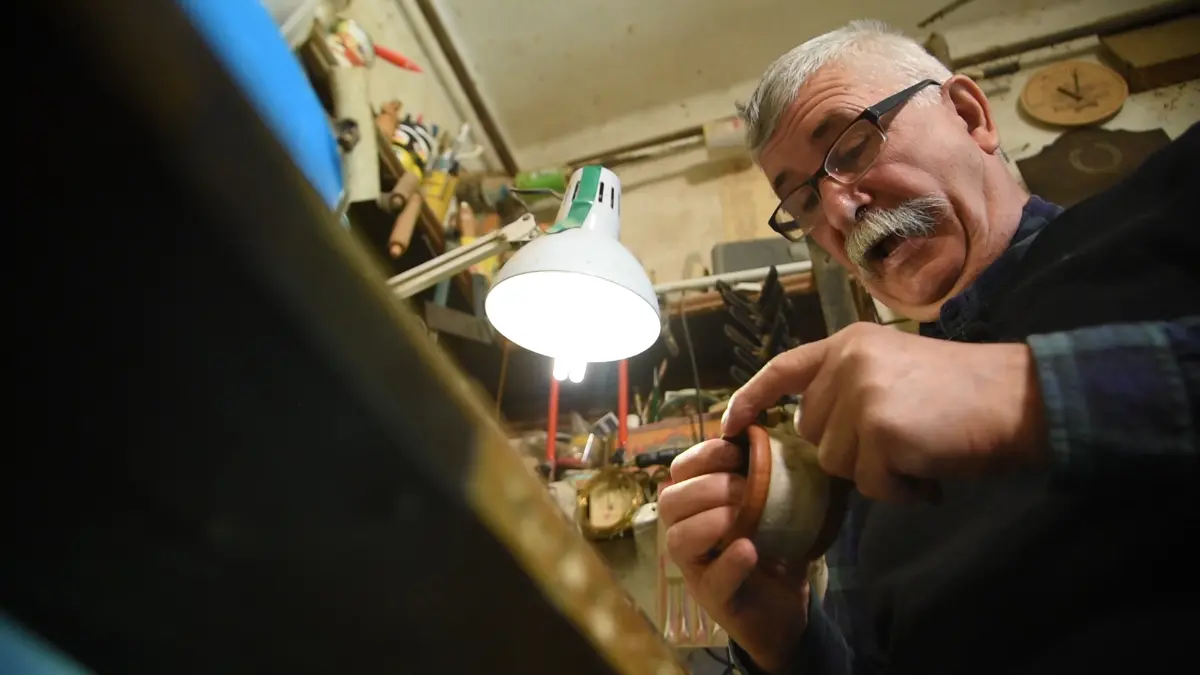
He wasn’t cut out to be a woodcarver, but he found his calling in this profession
At that time, when I graduated from high school, they took all the young boys who didn’t continue their studies to the army. To avoid this, the more able enrolled in a vocational training school, including me. I became as an electronics technician and then a computer programmer. But after 15 years, I realised I was more interested in carving. Although I consider the two as related professions, as both have a beginning and an end, I also cultivate tradition with my carving, and I don’t have to continuously keep up with the future,” says Zoltán.
His work is characterized by the representation and reinterpretation of Somogy shepherds’ techniques and motifs.
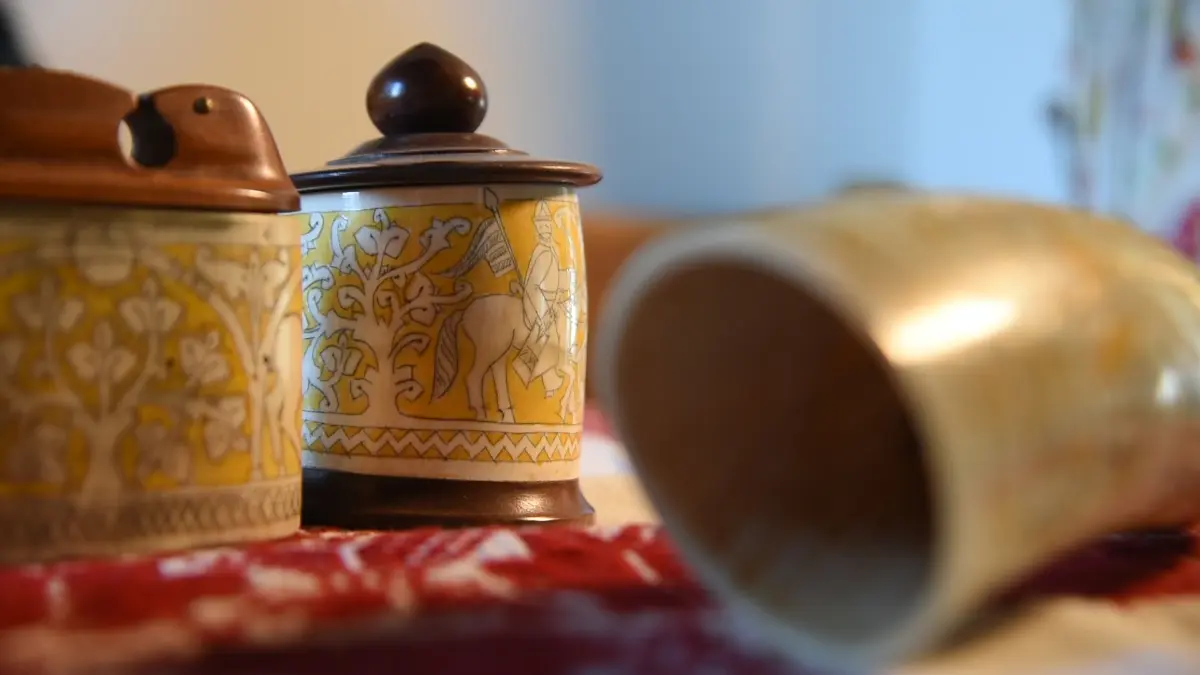
Zoltán Gosztonyi has already modelled the story of János Vitéz (John the Valiant) on a horned stool made from the horns of a large grey cattle. But the Somogy shepherds mostly carved an event in their environment. This is how the shepherd, the hunter and the excerpt from the forest scene that they are linked to ended up on a horn whistle.
He makes only unique pieces
When I carve from bone, I always have to prepare it. It has a bone core in it, which I pull out after cooking and then clean out so that the periosteum doesn’t stay in and dry out. Thereafter, you can start working. But I prefer horn, it behaves differently from bone, as bone is snow white. And it is snow white because the fat is cooked out of it. The horn is slightly yellowish – the wood carver outlines the difference.
A swineherd’s horn whistle for posterity, a unique comb and drinking bowl for those who cherish tradition.
- For me, the most exciting thing is that although there is no longer much of a swineherd (in Hungarian, the swineherd (‘kanász’) is the name given to the shepherd who guards the pigs, named after the head of the herd, the ‘kan’ – ed.), I still make swineherd’s horn whistles. The horn whistle is our most ancient means of communication. We should not let this be forgotten. And I decorate it so that it has something to say in today’s world.
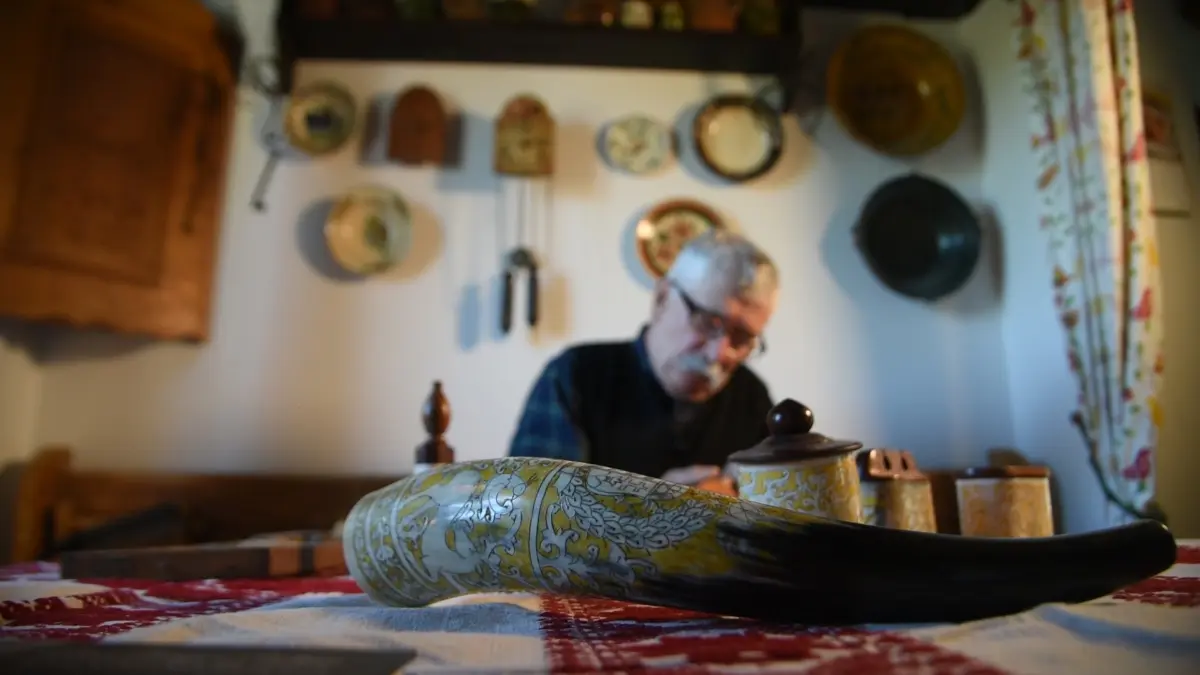
High school of traditionalism: unique and everyday objects are made
Many people are no longer familiar with the ‘csanak’, a special type of drinking bowl. But it was once a vessel for people walking in the woods and fields, carved from a piece of wood and decorated with various ornaments. Zoltán even makes them, and even colours the patterns with the sap of celandine! Zoltán Gosztonyi is determined to ensure that not only the special pieces, but also the craft is preserved for posterity. So in his spare time, he also carries out children’s education. Furthermore, his workshop is open to the public all year round.


